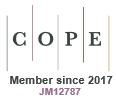Evidence for Au(I)…Au(I) Interactions in a Sterically Congested Environment: Two-Coordinate Gold(I) Halide Phosphine Complexes
Australian Journal of Chemistry
57(3) 213 - 218
Published: 02 March 2004
Abstract
Two-coordinate tris(2-methylphenyl)phosphine and tris(4-methylphenyl)phosphinegold(I) halide complexes, [AuP(otol)3X], [AuP(ptol)3X], where X = Cl, Br, and I, have been crystallized from dimethylformamide and characterized by single-crystal X-ray structure determinations. The P(otol)3 structures comprise an isomorphous series distinct from the previously published chloride, crystallizing with two independent molecules in the asymmetric unit in the space group Pbca, with a ≈ 20.0, b ≈ 28.0, c ≈ 14.0 Å. The molecules associate to form dimers through a back-to-back sextuple phenyl embrace (6PE). The P(ptol)3 complexes are isomorphous with the previously published chloride, crystallizing with two independent molecules in the unit cell in the space group P21/c, with a ≈ 10.0, b ≈ 22.0, c ≈ 19.5 Å, β ≈ 99°. The molecules associate through edge-to-face interactions along the direction of the a-axis. Preparation of the chloride by anodic dissolution of gold in an acetonitrile solution of the ligand and aqueous HCl yields a new polymorph, crystallizing in the space group Aba2, with a 19.738(2), b 11.813(3), c 17.645(1) Å. Despite the bulkiness of the phosphine ligand, this form of [AuP(ptol)3Cl] exhibits a short intermolecular Au…Au contact distance of 3.375(1) Å, indicative of a significant aurophilic interaction. The ranges for the Au—P, Au—Cl, Au—Br, Au—I bond lengths and P—Au—X bond angles in the series are: 2.201(3)–2.265(4), 2.255(3)–2.290(4), 2.388(2)–2.411(2), 2.542(1)–2.556(2) Å, and 173.2(2)–179.6(1)° respectively.
Keywords: metal-metal bonds — Au — X-ray spectroscopy — arylphosphine ligands
https://doi.org/10.1071/CH03172
©
CSIRO 2004


